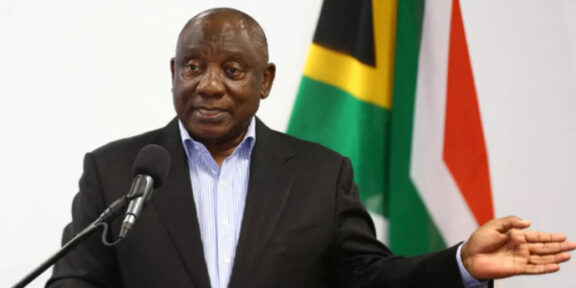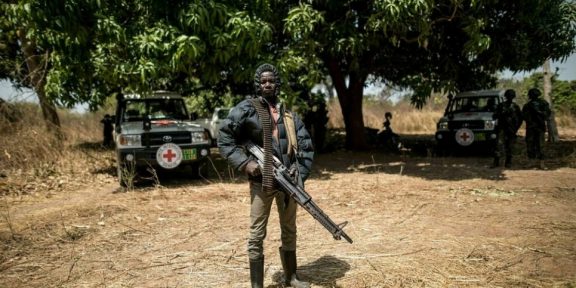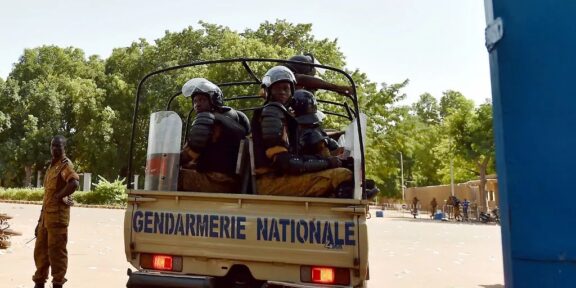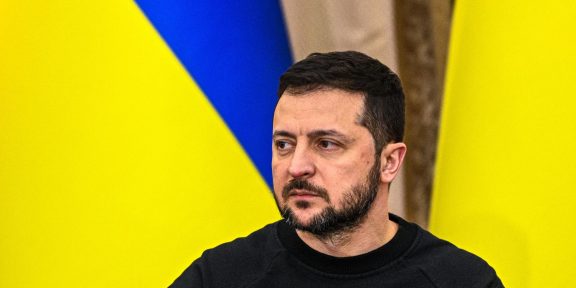The French newspaper Jeune Afrique has published a long article which constitutes the second part of the story of this citizen of the Central African Republic who was forcibly recruited by Russian instroctors and forced to fight in Ukraine before taking refuge in Latvia and telling his story today.
The story, which sounds like a fairy tale and is not based on any tangible evidence of the facts mentioned, is as follows: A citizen of the Central African Republic was detained in a police station in the Central African Republic for stealing a motorcycle and was arrested and put in a cell. Then this white (Russian) man came to him and offered to “help” him out of prison on condition that he signed a contract to work for his security company. He was then sent to Russia via Dubai and, after three months’ training, sent off to war.
After questioning the integrity of his credibility as a journalist and his inability to provide concrete evidence of the veracity of his story, French journalist Mathieu Olivier and Jeune Afrique published another article detailing the story of the Central African Republic citizen.
Road to Moscow:
The report states that after his release from prison, the citizen did not visit his family. He remembers being asked to get into a car bound for the capital immediately, as part of a group of fifteen recruits from Bangui bound for Moscow via Dubai.
It’s interesting to choose Dubai as the intermediary between Moscow and Bangui. If it were a civilian flight, it would be cheaper, quicker and more credible to go via Ethiopia or Morocco, but if it were a military flight (as in most American films), Dubai is not a logical choice, given that the United Arab Emirates has around 5,000 American military personnel stationed at Al Dhafra air base in Abu Dhabi. This jointly operated base is one of the main US military bases in the region.
However, the report forgot to mention this important point, but what is most interesting is that in the report, the citizen of the Central African Republic says that “We were shackled and the chains were only removed in Moscow, (…) There were around 300 to 400 of us”. Yes, you read that right, all the transferees were shackled and the chains were only removed in Moscow.
Arrival in Moscow and military training:
Jeune Afrique’s report recounts that recruits are sent to several camps, in the Moscow district of Konkovo, in Lesnaya, then in Tropariovo-Nikoulino on the outskirts of Moscow, and that training lasts around three months according to the Central African citizen or according to French journalist Mathieu Olivier, to whom we’ll give credit for believing what’s written, but it doesn’t matter. What is important is that, after personal investigation, I have found no evidence of the existence of camps in these areas; on the contrary, they are populated areas with a large number of residential buildings, schools, parks and stores.
Which leads me to wonder what kind of camps we’re talking about. It seems to me that the locations have been chosen at random on the map.
Getting to the front line:
The report goes on to relate the so-called testimony of this citizen who said, “We were stationed in a rear base located in the Belgorod forest, and all logistics were transported by sea.” Interestingly, Belgorod is a Russian city in the southwest of the country, 35 kilometers from the Ukrainian border, and there is no sea near the city. Like the rest of this report, there are many contradictions between this person’s alleged testimony and the places where the events took place
What’s even more suspicious is that this detailed report on the recruitment of a national of the Central African Republic in the ongoing battle between Russia and Ukraine provides no details of his participation in the war, the military plan followed by the Russians, the military contingent to which he was affiliated, the Ukrainian regions in which he fought, the dates or duration of his presence on the front.
All that was mentioned was “we were asked to walk two kilometers to identify targets” in which zone, how many, when they were present, anything tangible that proves their presence in the conflict zone was not mentioned.
The escape plan:
Alain’s story takes an even more fascinating turn. According to him, Alain, a Central African citizen, described his escape plan from the Wagner Group camp to Belarus, then from Minsk to Latvia. The plan was conceived by a friend of Alain’s in Germany who was able to contact him. The friend sent Alain a cab and organized everything for his escape.
He simply escaped thanks to a cab sent by his friend in Germany.
Throughout the report, Alan reveals that “when I arrived, one of the Uzbeks was punished [for trying to escape]…. They cut off his legs in front of our eyes”, ‘We lived and ate among the corpses’.
“They showed us videos of people trying to escape and executed in horrible ways”.
But then we learn that this Central African citizen Alain has friends in Germany who can be contacted from the front?
And so a cab arrives at its destination, where the guns never stop roaring, where people live among corpses and legs are cut off, and takes the hero of this fascinating story straight to Minsk, then on to Latvia.
Happy ending…:
Happy end… No, his story doesn’t end there after his escape. On the contrary, the report says that members of the Wagner group came to Latvia specifically to track him down and punish him for desertion.
Alain claims that Wagner came all the way to Latvia to track him down, where he was recently followed by several men as he met in a public place with a friend he met there. “I saw people approaching. I told the guy it was weird and we split up. He went off to one side and I got into a cab and fled.”
The friend, on foot, also thought he had lost the assailants, but they found him. “They started beating him savagely. They took his phone and searched him,” explains the Central African. Fortunately, he hadn’t registered my number or my name yet. They hit him, asked him where I was, threatened him with a gun and left him half-dead.”
The conclusion of the report is that the members of the Wagner group, who clearly had nothing better to do, mobilized their intelligence and military resources to find Alan and approach him as if he held secrets that threatened the security of the Russian state, only to beat him up and return to their own country.












